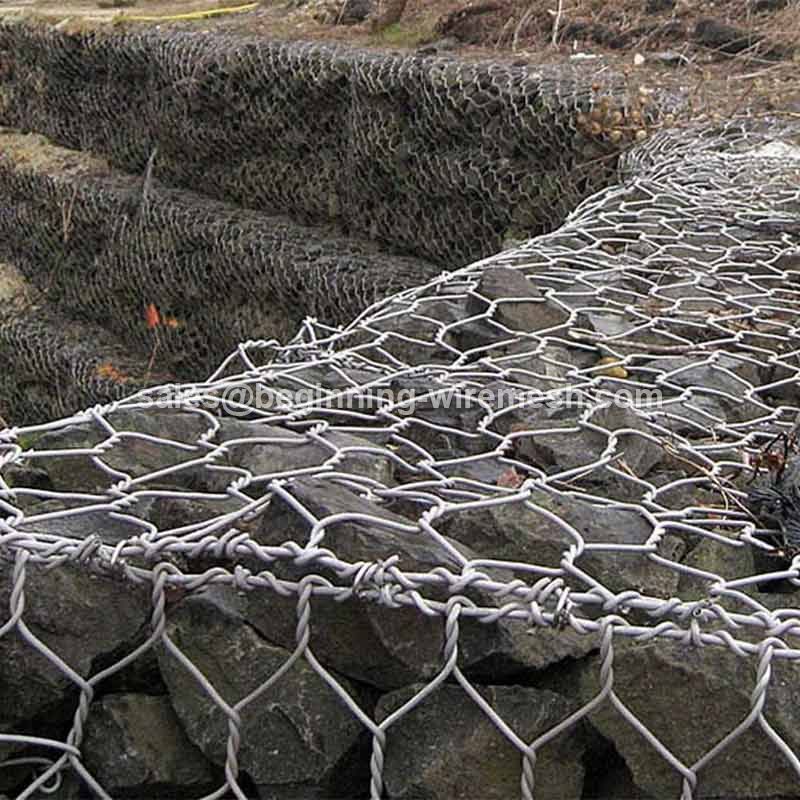Installation Tips for Gabion Wire Mesh
Are you looking for a versatile and durable solution to enhance the aesthetics and functionality of your outdoor spaces? Look no further than gabion wire mesh! This comprehensive guide will walk you through everything you need to know about gabion mesh, from its definition and uses to installation tips and maintenance advice. Whether you're a homeowner, landscaper, or construction professional, this guide will equip you with the knowledge and expertise to make informed decisions about gabion wire mesh.

Gabion Wire Mesh: What Is It?
Gabion wire mesh, also known as gabion baskets or gabion boxes, is a flexible and robust wire mesh container filled with stones or other solid materials. These wire mesh containers are typically made of galvanized steel wire, providing exceptional strength and corrosion resistance. The mesh openings are carefully designed to prevent the stones from escaping while allowing water to flow freely, making gabion wire mesh an ideal choice for various applications.
The Many Uses of Gabion Wire Mesh
Gabion wire mesh offers a wide range of applications due to its versatility and durability. Let's explore some popular uses of gabion wire mesh:
1. Retaining Walls
Gabion wire mesh is widely used for constructing retaining walls. These walls provide structural stability by preventing soil erosion and maintaining the integrity of slopes. The wire mesh containers are stacked on top of each other and filled with stones, creating a sturdy and visually appealing retaining wall. The natural appearance of the stones adds an aesthetic touch to any landscape.
2. Erosion Control
With its ability to withstand heavy water flow, welded gabion wire mesh is an excellent solution for erosion control. It can be used along riverbanks, coastlines, and other areas prone to erosion. The wire mesh containers effectively hold the soil in place while allowing water to pass through, reducing the risk of erosion and maintaining ecological balance.
3. Landscape Design
Gabion wire mesh provides endless possibilities for creative landscape design. From decorative walls and fences to unique seating elements and garden features, gabion wire mesh can transform any outdoor space into a visually striking environment. The flexibility of the wire mesh allows for imaginative designs and customization to suit individual preferences.
4. Sound Barrier Walls
If you're looking to minimize noise pollution, gabion wire mesh can serve as an effective sound barrier. The dense structure of the wire mesh containers, when filled with stones, helps absorb and deflect sound waves, reducing the impact of noise from nearby roads, railways, or industrial areas. This makes gabion wire mesh an ideal choice for residential or commercial properties located in noisy environments.
5. Coastal Protection
Coastal areas are often exposed to the relentless forces of waves and tides. Gabion wire mesh has proven to be an efficient solution for coastal protection and shoreline stabilization. By creating structures such as revetments and breakwaters using gabion wire mesh, the impact of wave energy is reduced, preventing erosion and safeguarding coastal infrastructure.
Installation Tips for Gabion Wire Mesh
Proper installation is crucial to ensure the longevity and effectiveness of gabion wire mesh structures. Here are some essential tips to consider when installing gabion wire mesh:
1. Site Preparation
Before installation, it's essential to prepare the site properly. Clear any debris, rocks, or vegetation from the area where the gabion wire mesh will be placed. Ensure that the site is leveled and compacted to provide a stable foundation for the wire mesh containers.
2. Selecting the Right Stones
Choosing the right type of stones is crucial for gabion wire mesh installations. Opt for durable and weather-resistant stones that will withstand environmental conditions. Consult with a professional to determine the appropriate size and type of stones for your specific project.
3. Assembly and Connection
Start by assembling the gabion wire mesh containers according to the manufacturer's instructions. Use sturdy wire or fasteners to connect the edges of the wire mesh panels securely. Ensure that the connections are tight and properly aligned to maintain the integrity of the structure.
4. Filling the Gabion Baskets
Carefully fill the gabion wire mesh containers with the selected stones, ensuring an even distribution of weight. Use smaller stones to fill the gaps between larger ones, maximizing stability. It's essential to avoid overfilling the containers, as it may cause bulging and compromise the structure's integrity.
5. Securing the Lid
Once the gabion wire mesh containers are filled, secure the lids to prevent any displacement of the stones. Use the provided fasteners or wire to tightly close the top of the containers. This step is crucial to maintain the shape and stability of the structure.


